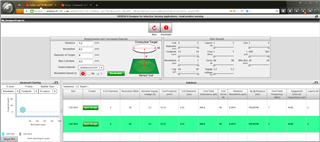In 2018, I designed a product that uses ldc1612 to measure metal distance. At that time, PCB coil was designed by WEBENCH of TI company. When I set several parameters, WEBENCH generated the PCB layout file of the inductance coil. These parameters are the maximum measurement distance, relative accuracy, number of PCB layers, etc., which are intuitive and convenient. Now I can't find this page on Ti website. Now I can't improve the PCB coil of the product I designed three years ago, because in the current parameter setting of WEBENCH coil design, I can't understand the meaning of several parameters set in PCB coil design. I don't understand the relationship between these parameters and my design, but the parameters three years ago were completely different. At that time, I knew these parameters very well. Now I can't improve my product parameters.
previous

current


